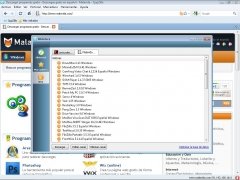

It has an option to use vertical tabs and the horizontal tabs at once. It has the option to nest child tabs so you can easily organize your chaos. This Falkon extension allows you to view, whitelist, and delete Flash cookies.įor those that consistently have over a dozen browser tabs open at once, this is worth checking out. For the normies like me, you can stick with the dozen included blocklists, or subscriptions. There's a guide for writing Adblock rules with regular expressions (regex). AdblockĪdblock is a Falkon extension to block spammy and malicious content. I wonder what nonsense I could write in it to screw with someone's web analytics application. Or, I can set an user agent for a specific website.

I can switch between Firefox, Chrome, and Safari within seconds. Below are my four favorite Falkon browser features and extensions. I recommend it for anyone looking to try something new. Falkon is a stable browser that makes compliments my needs for privacy and user experience (UX). Qupzilla was buggy and crashed at random when I tried it as a Linux newbie years ago. You'll get a message with a list of recently opened tabs, and you can choose the ones you want to recover by entering a check mark.Falkon, formerly known as Qupzilla, is a Chromium-based web browser for the KDE desktop environment (DE). If QupZilla happens to crash during a session, it tries to recover all the previous tabs. To view the contents, click the icon in the frame and only then will QupZilla load the data. Similar to Firefox's widely used Flashblock add-on, QupZilla then shows only Flash videos in a frame from websites with the Flash icon. , where you can define a whitelist of unblocked Flash addresses. QupZilla allows you to hide certain resource-demanding content, especially for slower computers, such as Flash animation. Additionally, you can set the tab and address bar configurations just as freely from the Tab Preferences, you can freely configure the icon and menu bars so that the browser can be in more of a kiosk mode with limited controls visible. QupZilla then changes the browser appearance immediately without a restart. To activate one of them, click it and confirm your choice with the Useīutton at the lower right. Includes a selection of five themes with which to customize the browser. The options provided are similar to those in Firefox.
Qupzilla adblock password#
The basic browser settings – such as home page, web configuration with JavaScript, cache size, download and password management, and privacy options – are made in the various subgroups of the settings menu. QupZilla then partially groups the setting options in the right pane into horizontally arranged tabs ( Figure 2).įigure 2: You can configure your browser in one clearly arranged window. In the larger pane on the right, you can actualize the settings. A new window appears with several options in the left pane to customize your browser. You get to the settings from the horizontal menu bar with Edit | Preferences Settingsĭespite its similarities to Firefox, QupZilla has a settings menu that deviate from Firefox quite a bit. ) view of Opera and Firefox that presents the recently visited web pages as miniatures on new tabs so that you can quickly visit them again. QupZilla also uses the well-known tile (here called Speed Dial QupZilla then sets the browser into a private mode, when a new window opens while the original one remains. QupZilla integrates and activates the Adblock ad blocker that needs to be configured in a somewhat unusual dialog. Newcomers require no further training ( Figure 1). QupZilla's external look and user experience are closely modeled on Firefox, and it fits seamlessly into any existing work surface because of its Qt library base. The enormous speed of the browser derives from the Webkit rendering engine that allows fluid surfing even on less powerful hardware and eliminates stuttering when scrolling. Figure 1: QupZilla opens up with its default settings.


 0 kommentar(er)
0 kommentar(er)
